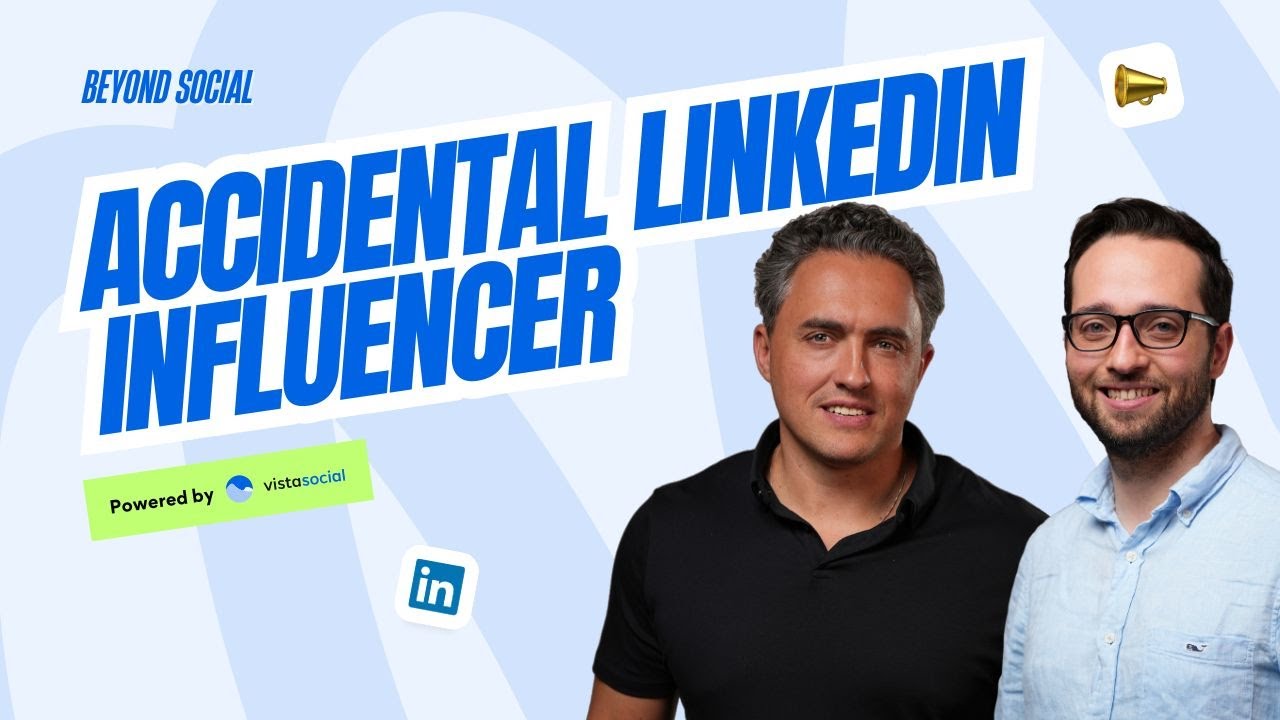New
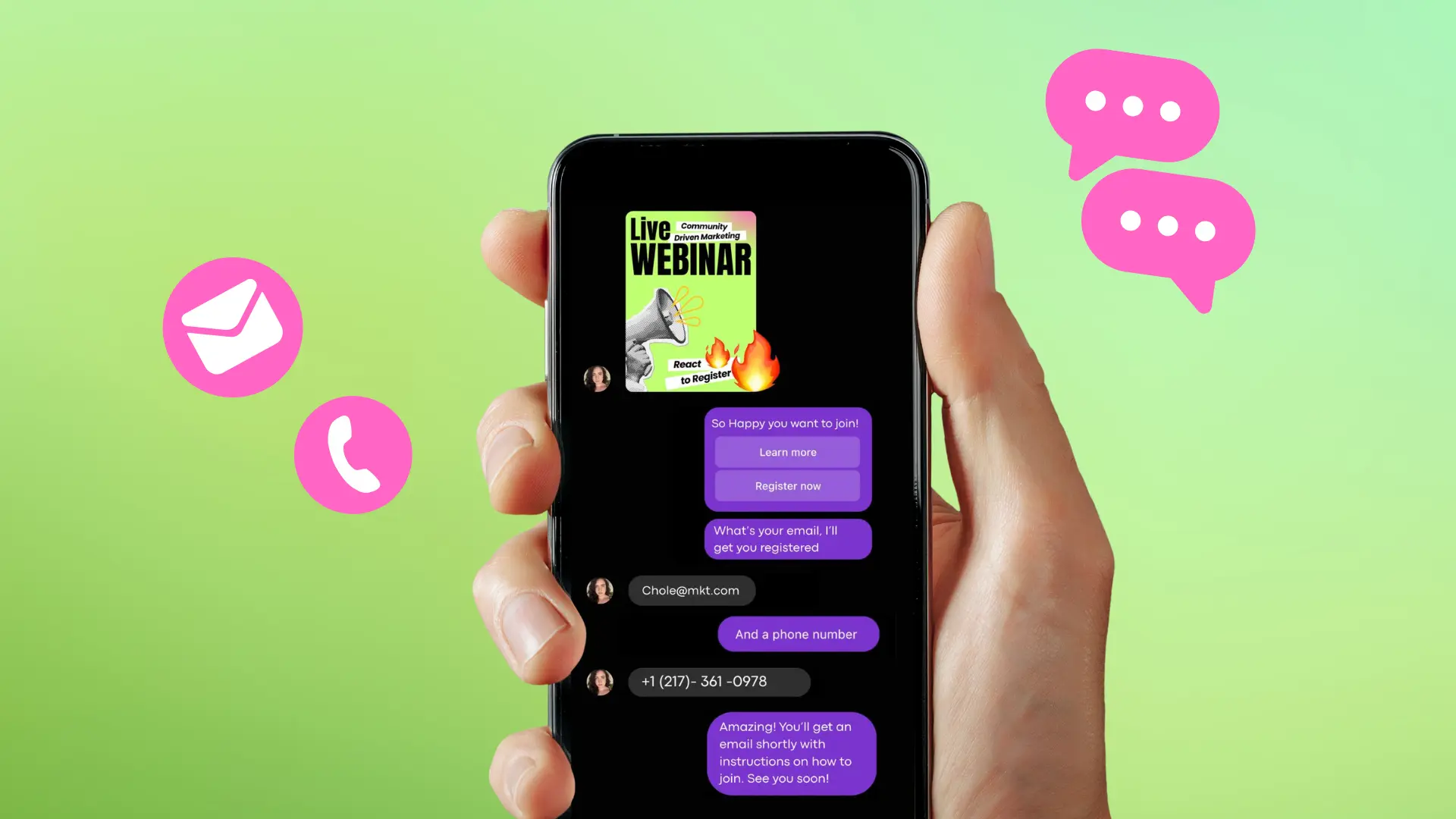
Turn Your DMs Into Lead Gen!
Learn how to collect lead data from your DMs such as email addresses, phone numbers, and more right from your social inbox. If you are not yet automating your DMs your competitors are outpacing you.

How Something Social Saved 75% of Their Time and Increased Revenue by 15%
See how a fast-growing agency improved operations, cut down hours of manual work, and unlocked new revenue opportunities with Vista Social.
New
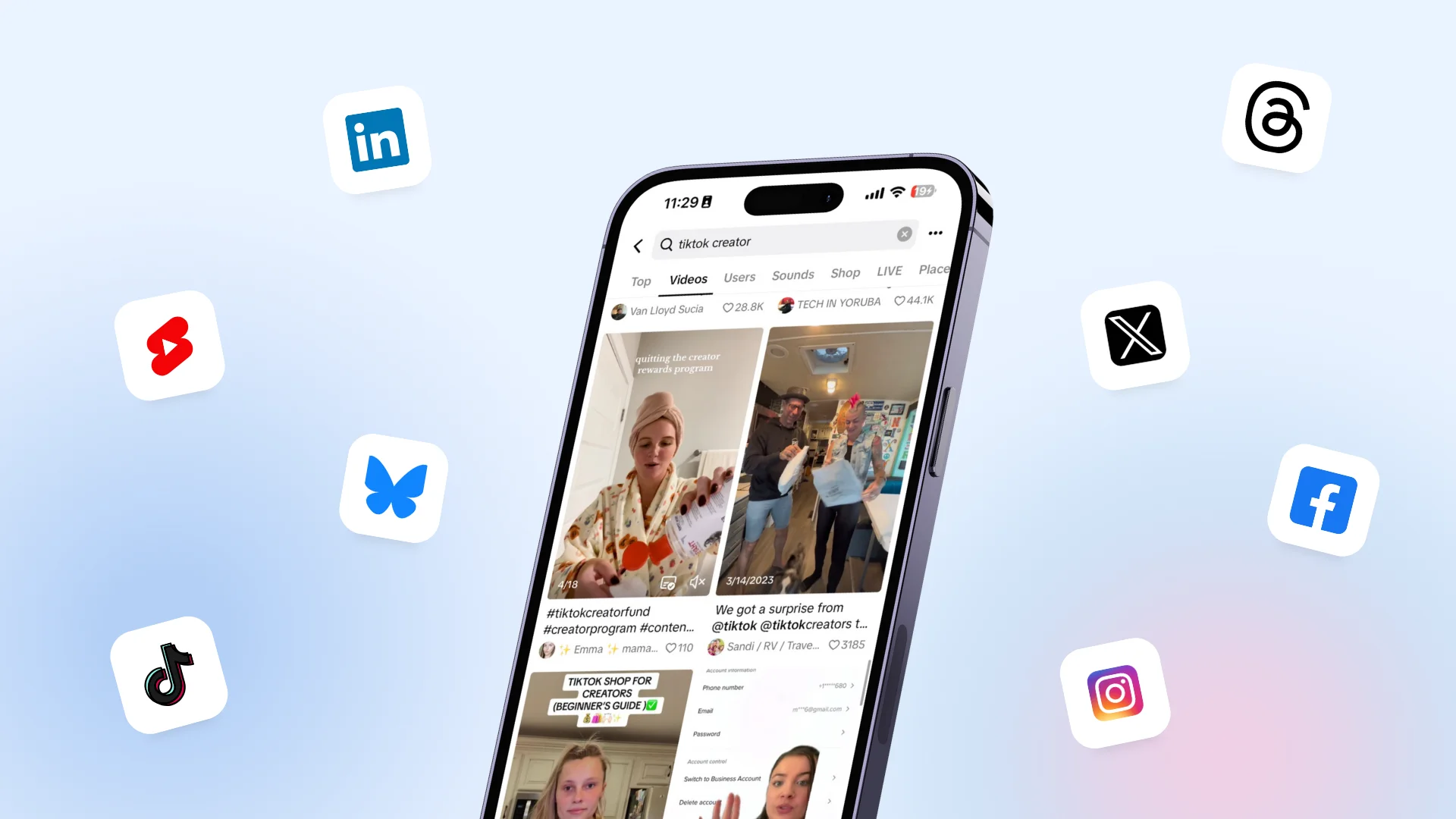
50 Unique Social Media Ideas for Consistent Content Creation
Discover 50 unique social media post ideas to engage your audience, grow your brand, and maintain a consistent content strategy with ease!
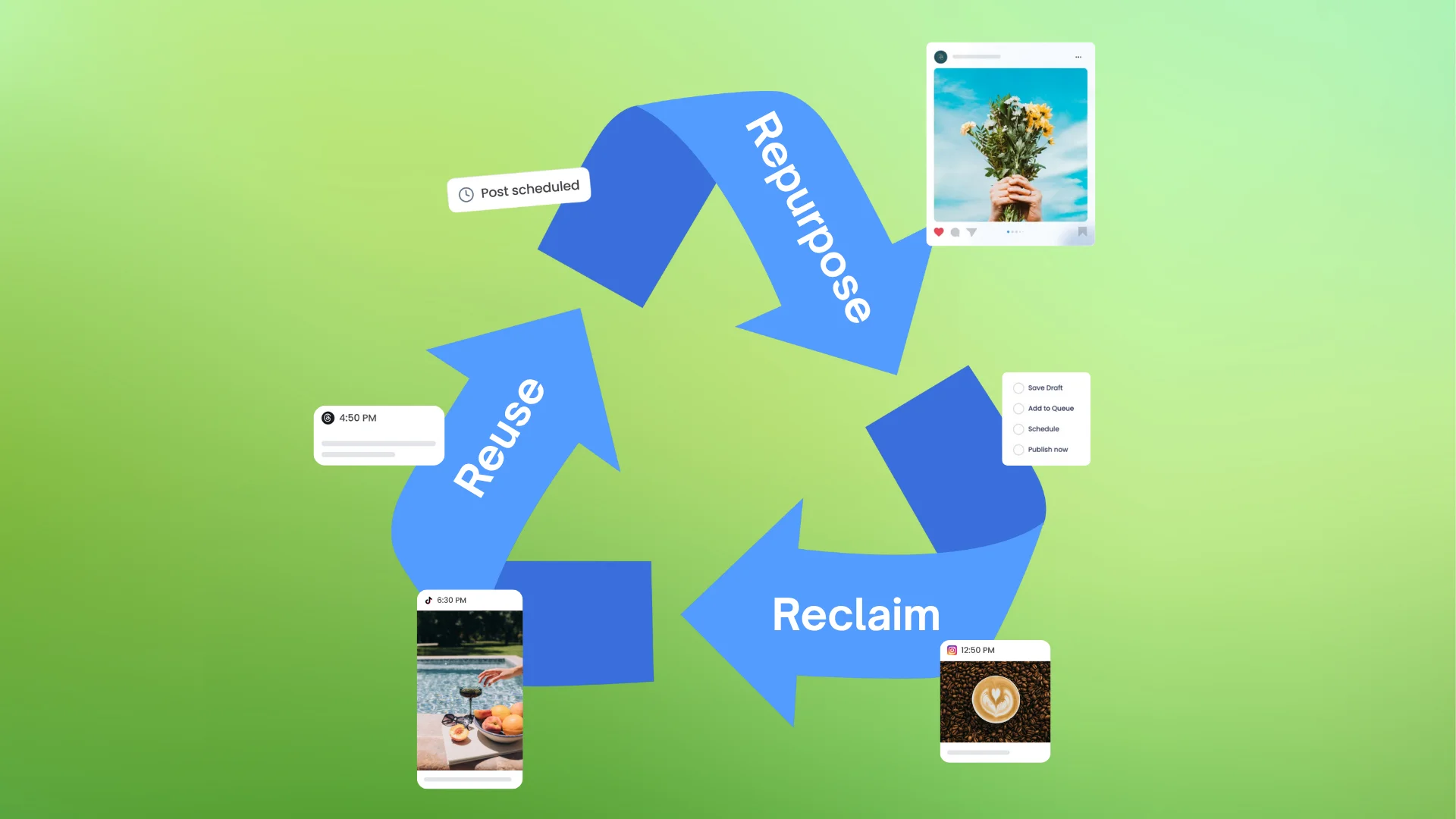
Mastering Content Reuse: The Key to a Consistent and Sustainable Posting Strategy

Table of Content

Getting access to socials is important because there’s a very big security element to this. They’re trusting you, your agency, with, I mean, if we can be straight, like their life. This is a brand that they’ve built.
Hey everyone, welcome to Beyond Social, the show where we take you behind the scenes on how we’re building an awesome tool for marketers. I’m Reggie, one of your hosts, and today, Val and I are talking about how to win and keep your customers as an agency.
Table of contents
The Critical First 100 Days
So Val, I know that we were talking about this last week. I’ve been reading a book about how to never lose a customer again. I think it’s Joey Coleman, if I’m not mistaken. And there’s a very pivotal moment, I mean, it’s really kind of the crux of the entire book, which is you’ve really got a 100 days, whether you’re an agency or a business in general, 100 days really to turn that customer into a loyal customer.
And that day mark really is pivotal. They’re either going to completely go away, you’re going to see the churn, the loss, they’re going to go to a competitor, or they’re going to become loyal. And so there are things that you really got to make sure you’re doing well and most of the first 100 days is generally about solid onboarding, making sure that you’re all aligned on what you’re going to deliver and that you’re showing a lot of value to them.
And that’s really what we want to talk about today is as an agency, you’re taking on clients, how do you make sure that you’re not just winning the customer, but you’re keeping them, turning them loyal within that first 100 day window?
Setting Up Proper Analysis and Reporting Systems
Yeah, I mean, let’s break down I guess what’s happening in the first 100 days, right? It probably all starts with you as an agency trying to find a convincing way of demonstrating to the customer how well you understand what they have today and what they, what their strategy could be like and what are some of the goals.
Right, in that, you will have to find a way to present to the customer, um, an analysis of their current state of things when it comes to social media, right? And again, let’s kind of also tell the viewers that in this conversation, we are mostly discussing the social media management aspect, right, of your relationship with the customer. Um, if you’re an agency and you’re offering other services, some of what we discussed today will apply but for the most part, our focus is on social media aspect of it. Not only because it comes with this necessity to have the right systems in place, perhaps unlike, you know, some of the other, um, marketing initiatives where it’s more creative or it’s more research-based. Social media management would require you to have good systems in place.
And this initial phase of your relationship with the customer where you will present them the state of things with some analysis is with a perspective on what the competitors are after and currently doing. So you would need a system for that. An SMM product typically like Vista or any other, or not any other, some others, uh, would certainly kind of be required for you to be able to throw in their profiles in there. Run a nice, create a nice looking, uh, report that shows them right where they are today, where they’re going to go, and more importantly, how their competitors sort of do. And you can watch our other episode that talks about the metrics that matter. So this is kind of where that knowledge will come really handy just to make sure you include the right sort of data points in that analysis.
Getting Aligned on KPIs and Success Metrics
Yeah, so it’s really about getting aligned with the customer too, right? Correct. That first, I mean, really not the first 100 days, hopefully you’re doing this in the original initial onboarding conversation, which is what are the challenges that you’re having that you decided to come to us to solve right with your social media aspect, what are the most important KPIs. In which case, maybe you share with your client that episode that you talked about where we talked about shares overreach and some of the other metrics that are really important. But really just getting aligned with a customer like hey, this is how we’re going to measure success for our relationship, right? Getting aligned on that and then like you’re saying, like where are you right now, right? Let’s look back, this is, you know, has been the problem. These are the metrics that we can see are lagging indicators. These are going to be the ones that we’re going to work on improving with us.
And so analytics and we’re going to get, get into that, are going to be really important, um, as far as that onboarding. But before you even get into that, there’s the part of getting access to socials, which is correct.
The Security Challenge: Getting Access to Client Social Accounts
It’s important because there’s this very big security element to this, right? They’re trusting you, your agency, with, I mean, if we can be straight, like their life. Like this is a brand that they’ve built. There’s so much invested into it and they’re saying, hey, here are the keys to the Kingdom to my social, the ability to blast whatever message you want to my followers. So let’s dive a little bit into like kind of that first part. Like we, it’s a big ask asking for your clients for their socials.
Yeah, and I think recently I was asked, um, to for access to my LinkedIn personal profile and I found little comfort in that. Like I found, uh, a little, I was not willing just to do it out of the box. What, what sort of I insisted on was that I’m going to grant access to my personal LinkedIn through an SMM tool, like in Vista. I’m going to make that profile available to that person. And whatever content you create, I’m going to basically approve.
So there’s no way I’m sharing my login details with anybody and I’m just a person, right? Consider a brand with a lot more invested and a lot more damage, right, that could occur as a result of some unfortunate incident here or there, loss of credentials or content undesirable content making it through. So gaining access to client social profiles is very delicate, right? And goes without saying that asking for just a straight out password, it can probably fly with customers that are not maybe as fluent in marketing and insecurity, kind of potential problems with that approach.
Password Management Best Practices for Agencies
And we’ve certainly seen our share, right, in demos, our share of agencies that have spreadsheets, yeah, with logins. I don’t think we’re going to necessarily critique them on that too much because the reality of the world we live in is that that sometimes is a necessity because of a variety of factors, right? Some networks, for example, do not offer a way to delegate access, um, and as a result, you kind of have to have a person’s password. Like let’s say TikTok as an example, like there’s no way to delegate that access. So and if you have a willing participant, like if you have a client who sort of, sort of understands the complexity overall, then you should definitely get them into a system like an SMM platform where you could ask them to give you the permission. But, but again, we’ve seen cases, a lot of them, where the customer is just doesn’t have the time or just doesn’t care necessarily for the security implications and they, they will give you the login and, and that’s perfectly understood that that that happens and in that case you will have a spreadsheet.
But I think at least don’t share that spreadsheet with your team members, right? At least keep it to yourself, you as a founder of an agency or something. And from that point onward, continue to use the platform where exchange of passwords is no longer required. But I think when it comes to onboarding of a customer, for an effective execution of a social media marketing campaign, getting access to their profiles, making sure that all the profiles are in the proper state. If it’s an Instagram, is it a Creator, is it a Professional, is it properly connected to a Facebook page? Um, you know, if it’s, uh, if it’s TikTok, you know, also, you know, what kind of a profile is that, right? And having all of that configured for the customer, having all of that properly connected, right, to an SMM product, uh, all of that ensures not only sort of a smooth onboarding because remember that unless that happens, you can’t really execute your work, right? You can’t begin to create content, none of it. Um, and probably the last thing you want is to suggest that, well, you can certainly try to do it natively, but I think not only perhaps it might look a little not as professional because that would require you to have those logins. But I think there’s no way for you to scale your operation if you do that, right? So unless you have an SMM tool, you can manage one or two customers directly on networks, but what about a dozen customers, right? It just becomes an impossibility.
Creating Secure Onboarding Processes
So this onboarding with, you know, for social media management tools, it’s, it’s trickier than perhaps some other marketing work that you might be involved in with your customers, in particularly centered around access, access to profiles, access to social profiles. And that’s the entry point. Like you’re saying, that’s really the starting block, is getting access to the profile.
So I think maybe step one as you’re building out your onboarding plan is make a plan, right? What kind of clients do I have? Do I, do I want to give two options? Option one, I’m going to invite you into our social media management platform and where I’m going to teach you, I’m going to show you, maybe there’s a little video that I’ve put together to show you, this is how you’re going to connect your TikTok there so that I can have access, so our team can have access to manage your TikTok or your X or your YouTube, whatever that might be. Um, but having that secondary plan, the backup, which is, hey, they may not be have the time, maybe they just want to share the passwords.
In which case I get the spreadsheets thing, but I would maybe urge, probably very, very heavily urge, invest in like a password management tool, right? There’s OnePassword, there’s so many different things out there where you can onboard those credentials into a very secure area, right? Um, and and really only delegate it where necessary. Maybe actually don’t, probably I would say just make a rule, don’t, don’t give those logins to anybody on your team because once you have them, once you’ve connected them into the system, your team does not need to have it. So the fact that you have it is somewhat unfortunate, but let’s say, you know, it had to be done. But beyond that, just make sure that it doesn’t, doesn’t sort of go, go. So be on that spreadsheet.
So if you onboard it into password management tool, maybe having a designated team member at your agency who’s responsible for obtaining those credentials, connecting that profile to the social media network, but nobody else outside of that person has that level of access. But in the most, in, in an ideal situation, it’s going to be you adding your customer as a user to the SMM platform, having them connect the profiles perhaps with your help. Uh, by the way, we’ve seen users even reach out to us for training of their customers. We, we host webinars related to connectivity all the time, right? Um, so however you do it, it, but it is an important part of this initial onboarding. Uh, mind you that when you ask the user for the credentials or to give you access, you may not always hear yes. Yeah, like a lot of people, I’m included, will find that very troubling to give somebody access like that.
Maintaining Stable Connections and Ongoing Support
Try Vista Social for Free
A social media management platform that actually helps you grow with easy-to-use content planning, scheduling, engagement and analytics tools.
Get Started NowAnd to make this even perhaps more complicated is that this connectivity is not only the onboarding problem, it’s a continuing maintenance issue because disconnections happen all the time. I don’t want to say all the time, but they happen rather frequently for a variety of reasons, password changes, expirations naturally. So not only do you need a system for connecting, you’re going to have to really become an expert and have a process around, make sure the connections remain stable. Because again, if they don’t, you can’t really do your work. Content doesn’t flow, you can’t really engage with your audiences, you can’t run reports. So that’s, that is very, very important.
Finding the Right Level of Client Collaboration
So when we talk about collaboration then, right? Because that’s, let’s say the part of in that first 100 days or in general, right? Keeping your customer engaged is going to help you to not only win but keep that customer around if it’s realistic, right? So you know, the question always is that the customers are involved in their businesses and as much as even if they want to be involved, they just may not have the, you know, the capacity or the time, right, to do that. So you want them involved, then it may require some creativity on on your part as to how to do that. Maybe it’s not so much around them, uh, contributing content or anything like that. Maybe it’s around them, um, contributing maybe media or let’s say photos or videos that you can then turn into.
So I think them being involved to some capacity is ideal, but I think reality of it is that it’s probably not realistic in a lot of cases. Plus again, remember that a lot of social media management isn’t a multi-thousand per month init like budget, right? Right. A lot of agencies manage their customers, you know, for a few hundred a month. So there’s only so much work that can go into it and therefore so much collaboration, because collaboration is time. So having an involved customer is certainly interesting and I think from that point onward, sort of like you want to make sure that the SMM product you’re using doesn’t penalize you for more users, right? Because a lot of them charge you per user, which kind of makes it very expensive to get everybody involved. At least here in Vista, we don’t charge for users. So you can have like as many users as you need. Um, because we feel so very strong, strongly that collaboration within teams and collaboration between teams and clients is key to a successful marketing execution.
Building Engagement Strategies Across Different Client Types
Right? Yeah, no, absolutely. And I think the, like the keyword there being like activating, right? Getting that client involved, it’s a spectrum, right? So I think it’s definitely like you said, unfair to expect a customer to be involved in every post, to give me the approval or add a comment at every single post because like you said, they could be a CEO of an organization that warrants a lot of their time. But having a plan in place again for what that activation or that level of engagement is, I think is going to be important, which is, listen, at the very least, a monthly recap report that’s going to outline these are the KPIs that we identified together. Are going to be the most important things to drive results. This is where we’re at. Just want to give you a heads up that look, it’s working. Something like that at the very least, right? And then obviously there’s that whole spectrum of, okay, there are some customers where maybe from the trust perspective for the first couple of months, they’re they maybe want to get involved, right? It’s again, their brand. Maybe they say, until you understand our tone or this or that, like we want to be a little bit more involved.
So not not being so rigid that you only have one set of activation or customer engagement policy in place, making sure that you have a tool in place that can help you with that spectrum from the most engaged, the most involved customers to the ones who maybe just need to get, uh, a report, it’s generated once a month and sent to their inbox, right?
Proving Value Through Meaningful Reporting
Right. The reporting is interesting because, uh, one of the, one of the dangers, one of the risks, rather, right, with operating an agency, is being able to continually convince the user, the customer, right, that your work is impactful, right? And it’s very difficult in marketing, particularly in social media marketing is because the impact on an actual business is something that could sort of evolve over time. Plus as we’ve already kind of spoken in some other episodes, right? Your social media marketing can’t be overly aggressive because if the key objective within social media marketing is to gain people interest, right, and loyalty, right? You can only do that through content that resonates, content that they’re willing to share, content and they’re willing to like. And it’s not the most, it’s not the kind content that says buy this, you know, product from me, right?
So for that reason, you won’t be able to tell your customer most likely that your social posts have produced so many, let’s say purchases, right? You’re going to have to explain to the customer and find a way to present it that other metrics are also indicative of forward motion, of progress, of success, whether it’s engagement rates, whether it’s impressions, whether it’s followers, whatever those numbers are. And I think I totally recommend watching that video that we did, the podcast that we did on metrics that matter. But including those in the report and presenting that on a regular basis to the customer, right, particularly within the first 100 days because they are particularly fraught with risks. Because customer is impatient, they’ve invested a certain amount of money, they’re kind of expecting the result. But getting them into the rhythm of understanding the metrics, again, meaningful metrics.
Focusing on Metrics That Actually Matter
I don’t think you should be selling your customer on the fact that the followers are growing. I think that will be a mistake, right, from the long-term perspective. I think these are the kind of like metrics that don’t matter in the end. And if you do attempt to kind of offer them as the deliverable to the customer, it will be just a matter of time before they’ll just kind of realize that they’re not very meaningful.
But if you do focus on metrics that matter, like impressions, shares, reach, um, then yes, you have much higher probability that customer would understand and appreciate the forward progress that everything is making and you’ll continue to service that customer, right? Because ultimately that’s the goal of these reports is to convince the customer of the value that you are producing. Yeah, absolutely. That’s that’s how you you build that relationship, right? That’s how you keep them engaged. That’s how you you win them over.
Building Referrals and Word-of-Mouth Marketing
I do want to talk about too, I think I I see this with us as well, right? You get to 100 days or that that period of time where you’ve really see that engaged customer, the customer that has found that aha moment of value and are understanding that what they brought you in for is delivering the results, driving the results that they’re expecting. And I think a lot of organizations maybe get a little nervous around having the conversation of, hey, can you, uh, make an introduction to me? You know, I’m glad that we’ve been able to build this relationship and it’s working well, do you have any friends? Do you have any business owners that you know that can benefit from having our organization take over their social media? It can be an uncomfortable conversation sometimes, but I think it’s important, right?
The word of mouth is going to have the most the highest converting type of channel for you, but it’s most likely going to drive the most type of loyal customer as well. So how do you Feel about that whole? I think somebody once told me that word of mouth was one of the most inefficient, uh, business Development strategies ever to exist because it’s so dependent on people’s or on customers willingness to, uh, kind of market your services. For a variety of reasons, sometimes they just don’t want to do it because they feel like you’ll just service them less and there are a lot lot of dynamics that kind of go into it. And I think sort of putting too much emphasis on that could be a bit of a misplaced kind of, uh, expectation. Uh, sometimes, but that’s more of a business question.
Building Confidence Through Professional Processes
I think ultimately delivering value for your customer and making sure that they understand it and the relationship lasts. In the lasting relationships, there are a lot more chances of good things happening than than on a short-term relationship, right? So I think I think the longer the relationship, the higher the chances that the recommendation could could occur for sure, absolutely. But I think confidence inspiring actions on your behalf as an agency, right, is is ultimately, uh, is ultimately what will foster the relationship, right? And it starts right at the onset of it, right? How do you foster the confidence, right?
Um, in that could be in the way you’ve presented, right, the pitch and the fact that you’ve used the tools and the fact you analyzed the competitors, right? It’s in how you handled the onboarding, right? And how you are making sure the customer understands the controls you have around security and how much confidence they have around that, right? It’s in the not only from just connectivity, the issue that we spoke about, but also let’s say the workflows, right? Let’s say you are offering to the customer out of the gate, hey, to build your trust, you will approve the content that I’m going to create. So I would even say go out and offer that. Yeah, again, in the situations where the customer is willing to kind of even participate, right? Um, but offer that out. Then obviously you want to have an SMM that has that feature. But don’t wait for them to kind of ask for it, but make that an option, make that, you know, put put put that on your menu of services and and possible possible things you can do for your customers and then let them choose it, right?
But I think that that sort of fosters that inspires confidence has seen things like that. Um, the workflows, the way you handled the onboarding, the fact that you’re very proactive about the metrics and the fact that you make a point of explaining to the customers that certain metrics are irrelevant versus other metrics are, but they’re harder to get. Educate your customer, you know, make sure that they understand that too. What you don’t want to have happen, right, is to show the metrics that don’t matter as deliverables. It would last, but most likely, it, it’s not going to create the lasting relationships that truly matter for you as a business, for you, you know, for you to win other business to continue having this.
Educating Clients on Quality vs. Quantity
Yeah, and we talked about that in that last episode too, right? Like follower growth. Probably most clients that get onboarded will like, oh, we want to grow followers. And that’s great. But like understanding and educating them that you’d rather have 50,000 followers that are actually a part of your ICP, that are part of your niche, that are going to be active and potentially become customers is a lot better than having a million followers or have a post go viral, 10 million views with people who are are have very little to no chance of actually engaging with your brand at one point or another to buy something or to become a customer. So that education piece for sure during the onboarding of getting aligned on the metrics that matter most.
Handling Complex Client Requirements and Integrations
But I think also from the day-to-day execution too, right? So you’re, you might be dealing with a smaller customer, midsize customer, the larger customer, and they all come with all sorts of different requirements often times, right? They might have no requirements where you’re just creating fresh content. They might have an existing CRM. They might have, um, you know, an existing in-house tool that they use for things. And again, you want to be in a situation where you’re prepared for, uh, you know, these nuanced, you know, kind of complexities, right, within your contracts. And you can’t really be in a good position with respect to them unless you’re using some sort of an SMM tool that has, has ability to connect or integration, integrate with, you know, CRMs, with Slack, with email, with, you know, any kind of Zapier type of, you know, integration. So you want to have that ability, you want to have that confidence.
So if the customer does insist, oh, you know, uh, connect to our, you know, uh, WordPress and, you know, schedule content based on that, right? So, so you want to have a product that kind of can deliver on these more nuanced. So I think what we spoke about mostly in the show were impression making tricks and tips, right? Uh, but I think you will, you will be doing the work too, right? So you will be actually like conducting the day to day. And when you are conducting the day to day, you want to have lots and lots of options, right? You want to be able to give your customer mobile app for them to use. You want to give them, uh, a way to give you an idea for a new post. You want them to be able to upload a photo that they like, you know what I mean? So you want those bells and whistles too. And even more reason to use, right, an SMM product.
So I think again, uh, managing social without a tool that could deliver you on the onboarding, on the day-to-day, on, um, the confidence inspiring elements, on, uh, customer preserving elements. Like you want, you want to keep that customer, which means you want to impress them, which means you want to look good. So all of that is what’s going to make, uh, you as successful at offering social media marketing to customers. And we are here to help. And in our conversations with users, like all of these sort of elements and and issues that we spoke about, these are like true dilemmas for a lot of agencies out there. And some of them are obstacle enough to where the agencies can’t grow or can get past it or they keep on losing customers because of it. And and and and that’s kind of how we evolve our product, is by basically understanding these pain points and kind of building solutions specifically for them.
Yeah, build value to the agencies who can then build value for their customers, right? Exactly. Awesome. Well, hey, thank you so much for joining us for this awesome episode where we talked about how to not just win your customers, but how to keep them, right? We’re really excited to be able to come alongside you and provide a tool of Vista Social to help you get engaged with your customers.
Don’t forget to share this episode. Leave us a comment wherever it is, you’re watching or listening in from. If you ever want to join us Val or I here on an episode, make sure you head over to our website or if you just have an idea of an episode that you want us to cover a specific, specific topic around, check us out vcia.com/podcast and we’ll see you next week.
About the Author
Content Writer
Russell Tan is a content marketing specialist with over 7 years of experience creating content across gaming, healthcare, outdoor hospitality, and travel—because sticking to just one industry would’ve been boring. Outside of her current role as marketing specialist for Vista Social, Russell is busy plotting epic action-fantasy worlds, chasing adrenaline rushes (skydiving is next, maybe?), or racking up way too many hours in her favorite games.
Read with AI
Save time reading this article using your favorite AI tool
Summarize with AI
Never Miss a Trend
Our newsletter is packed with the hottest posts and latest news in social media.
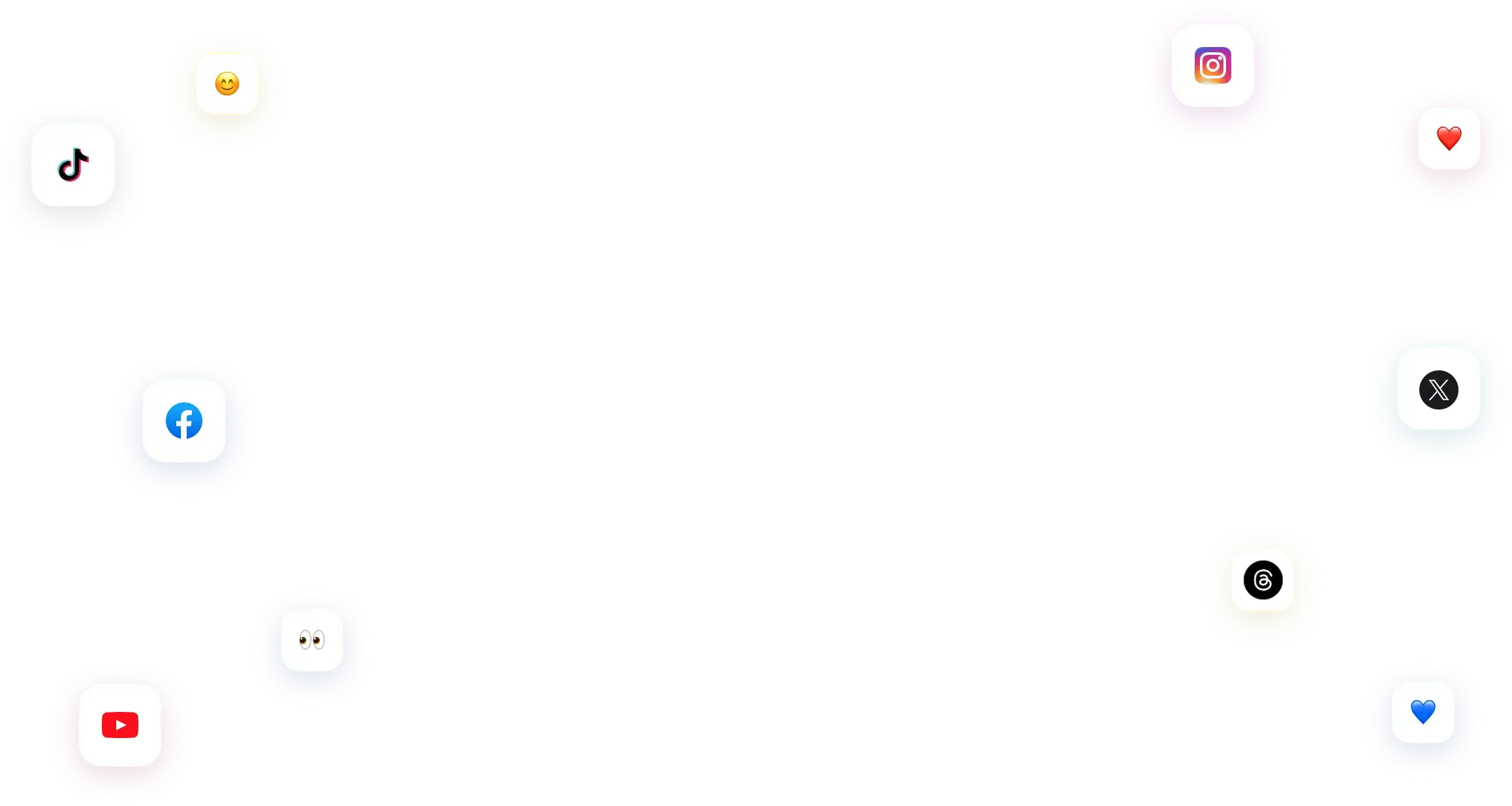
You have many things to do.
Let us help you with social media.
Use our free plan to build momentum for your social media presence.
Or skip ahead and try our paid plan to scale your social media efforts.
P.S. It will be a piece of cake 🍰 with Vista Social
Subscribe to our Newsletter!
To stay updated on the latest and greatest Social Media news. We promise not to spam you!



